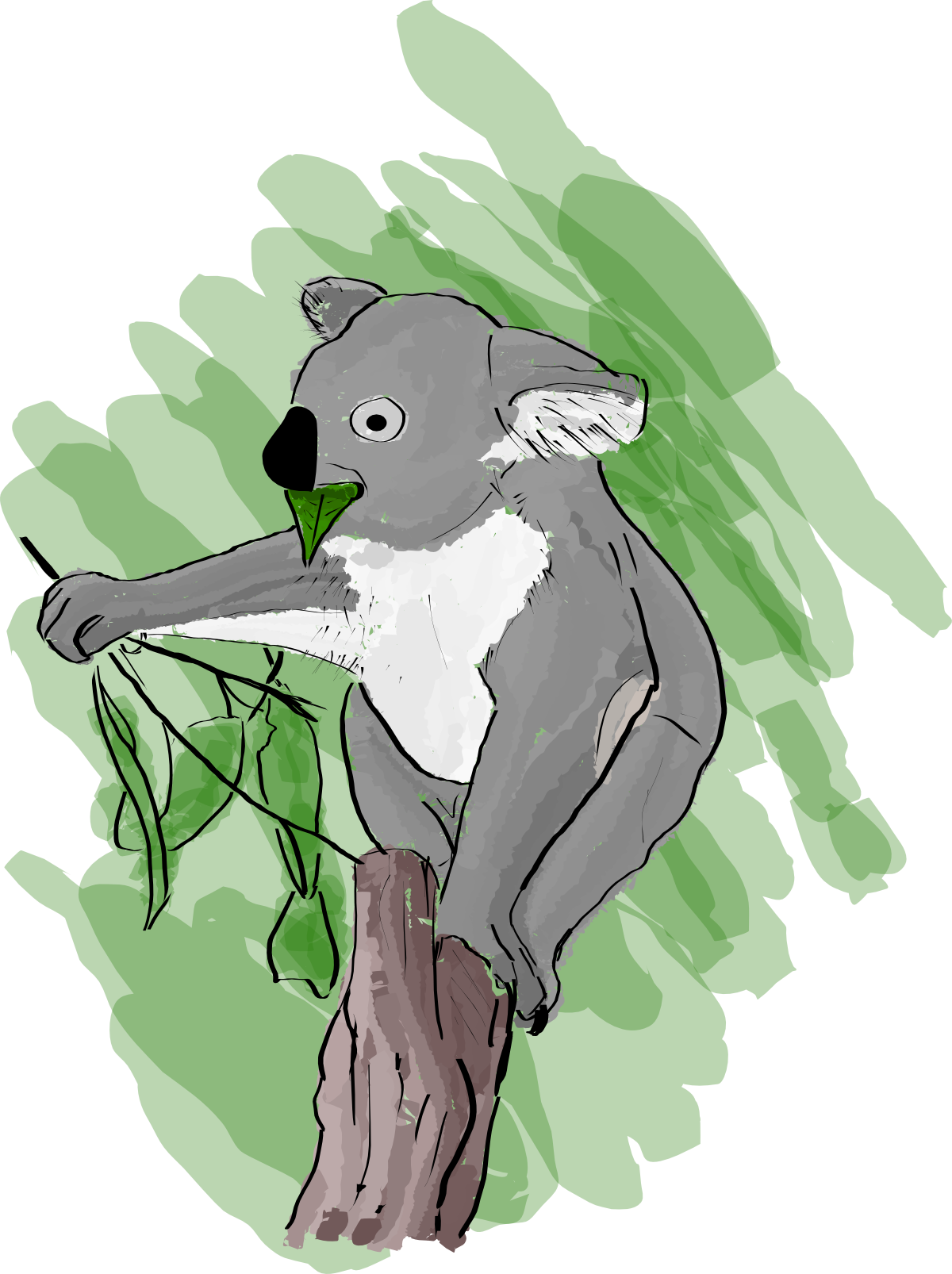On day 12 I tried experimenting with tracing and hand-colouring, and decided to continue developing this technique on my drawings for days 13 and 14. Admittedly tracing felt a bit like cheating, but on the other hand my primary aim was to draw something each day and the result of my tracing and colouring on day 12 had sparked a lot more interest in continuing. I decided to develop my technique in colouring and shading a little this way, then to go back to drawing from scratch and try to apply these skills.

For the Koala picture I traced a photo I had taken (a slightly different photo of this same koala previously featured in our post You Want Cute? You Can’t Handle Cute!). I used the same shading technique for the koala and branch that I used for the blue whale, then tried a different technique for the background.

On day 14 I traced a photo of my friend skateboarding. I tried to trace more quickly and loosely this time and used a variation of the shading method used for the background of the koala picture for the whole drawing.

On day 14 I tried applying the techniques I had learned to my own freehand drawing. I used a method for shading that combined elements of the whale/koala technique with the skateboarding technique. For this drawing I tried to be very quick instead of focussing too much on detail. Besides not keeping my colouring inside the lines, I’ve since noticed the shading angle is inconsistent on this drawing. Nevertheless, there were aspects of the final product I liked.
At this stage posts of my drawings on facebook were starting to generate a lot more comments and other interaction with friends – and again I noticed that this source of extrinsic motivation seemed to be also increasing my intrinsic motivation to draw. Fortunately for me, but not so fortunately for my experiment, I didn’t receive any criticism for any drawings.
Research has indicated that the impact of praise on intrinsic motivation is not always positive:
… praise may serve to undermine, enhance, or have no effect on children’s intrinsic motivation, depending on a set of conceptual variables. Provided that praise is perceived as sincere, it is particularly beneficial to motivation when it encourages performance attributions to controllable causes, promotes autonomy, enhances competence without an overreliance on social comparisons, and conveys attainable standards and expectations …
If a friend had made a comment praising one of my drawings but I had felt they were being insincere it could have reduced my intrinsic motivation to continue drawing. This is particularly relevant when we think about motivation in the context of depression because a common cognitive feature of depression is a tendency to disqualify positive experiences and perceive genuine praise as insincere or even as veiled criticism (for example, reacting to praise with thoughts such as “she only said that to be nice” or “I can tell he is really being sarcastic”). If trying to increase motivation during an episode of depression, there needs to be a plan for managing the way depression will alter automatic perceptions of social feedback, as well as managing the possibility that for anyone, no matter how competent their performance, a proportion of social feedback is likely to be critical or negative.


Leave a Reply